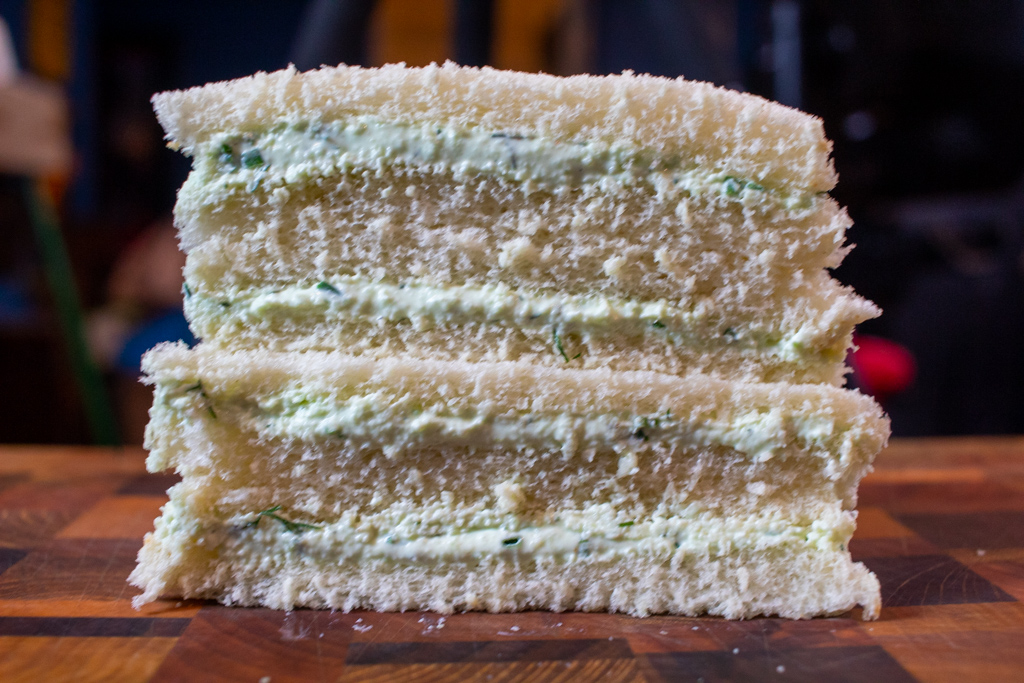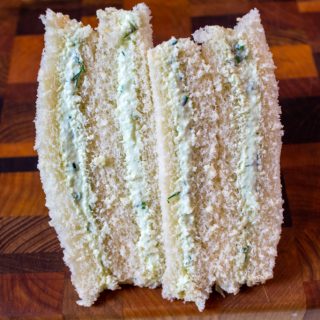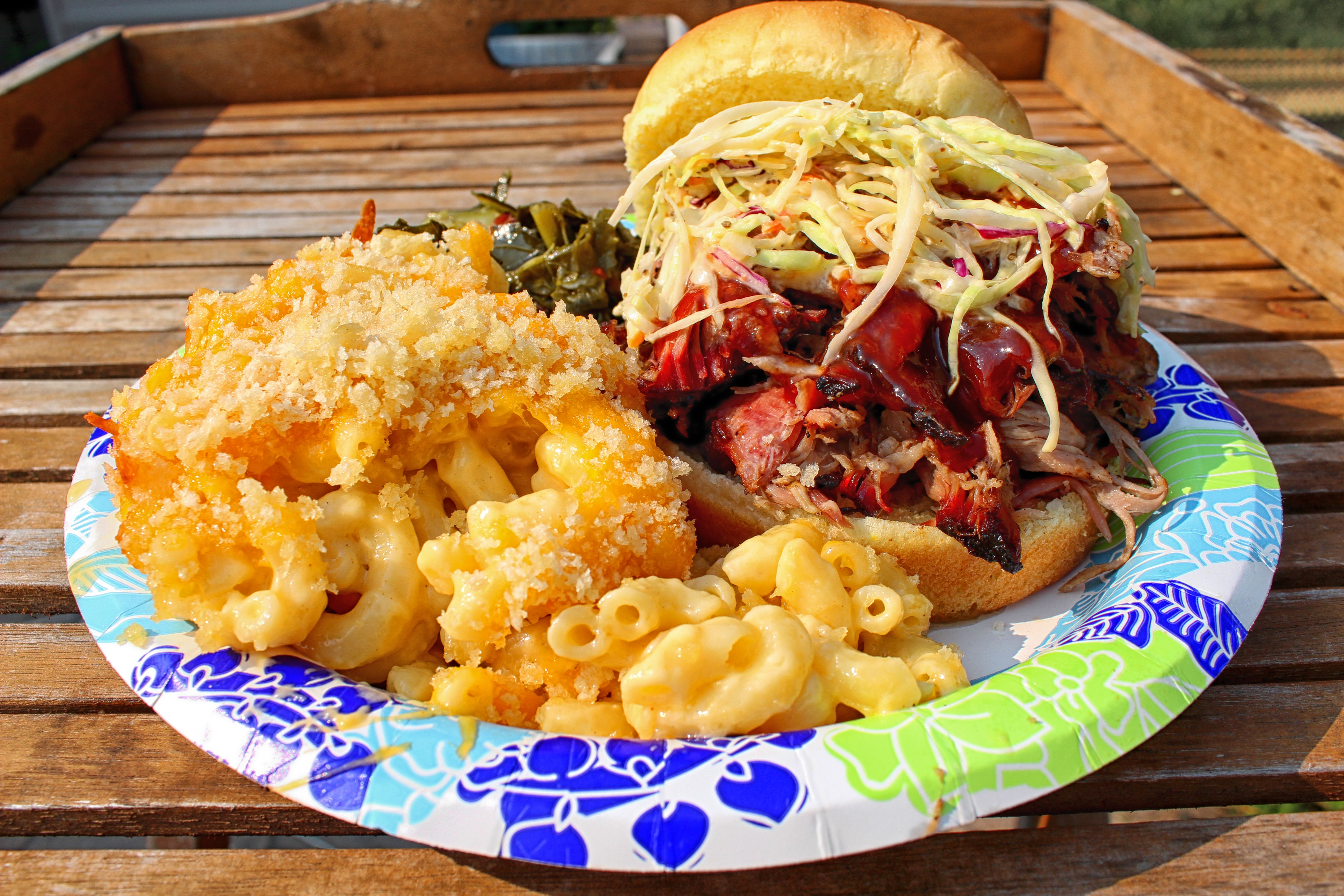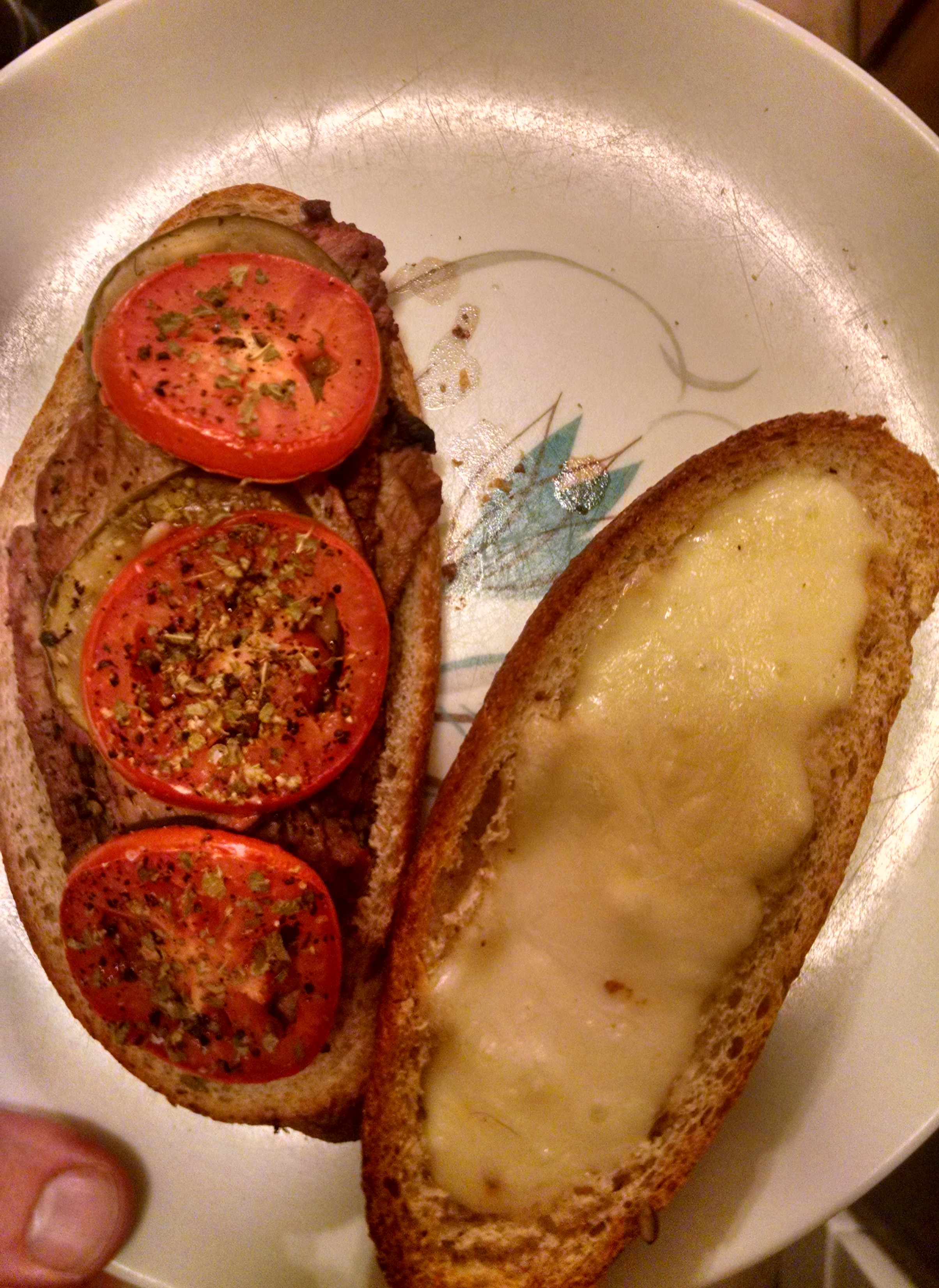Benedictine–Cucumber Sandwich Spread of Louisville
Cucumber sandwiches are, despite my own attempts to complicate them, a relatively simple thing. Start with bread; add a spread and sliced cucumbers and voila! In the late 19th / early 20th Century however, a restaurateur from Louisville, Kentucky came up with a way to simply it further–or perhaps just to intensify the cucumber flavor–by adding cucumbers to the spread itself. The chef, several of whose cookbooks are even now available on Amazon over a century after then were originally published, was named Jennie Carter Benedict, and the spread came to be named after her–Benedictine. (Though one commenter on TikTok says they grew up calling it “green cheese.”)
Benedictine is a cucumber sandwich in a spread—cucumber and onion mixed into cream cheese with a little seasoning and maybe some mayonnaise or sour cream to make it more spreadable. It might be made rustically chunky, with copious bits of cucumber and onion to chew, or it might be whipped fine, airy and light. Many recipes use minimal ingredients–just cucumbers, onion juice, and cream cheese perhaps–while others gild the lily with various herbs and spices. And often, green food coloring is added—no real reason for it other than to make the color pop, to accentuate its essential cucumberiness.


After reading a number of recipes and trying out a few variations, I came up with a recipe that tends toward the light-but-complicated quadrant of that particular rubric. Even so, this more complicated version of the recipe results in something very simple–a light, cucumber flavored spread with a little pungency from the alliums and a little zing from the hot sauce.
Benedictine spread
Ingredients
- 2 cucumbers peeled and shredded
- 1/2 white onion shredded
- 1 tsp kosher salt
- 1/2 tsp garlic powder
- 1/2 tsp white pepper
- 16 oz cream cheese room temperature
- 4 sprigs dill large stems removed, finely chopped
- 1 handful chives finely chopped
- 1.5 tbsp mayonnaise
- 2 tbsp sour cream
- 4-6 drops green food coloring
- 3 dashes hot sauce
Instructions
- shred the cucumber and onion into a fine colander over a bowl. salt and mix and allow to sit for several minutes to drain. Reserve drained water
- Add cucumber and onion mix to a blender or food processor and pulse into a paste
- gather cucumber and onion paste into a clean kitchen towel and wring moisture out over the bowl where they had drained previously. Reserve drained cucumber and onion water
- Return drained cucumber and onion paste to the blender or food processor. Add cream cheese, sour cream, mayonnaise, white pepper, and garlic powder. Whip until mixed well into a paste.
- Transfer to a bowl. Add chives, dill, and mix.
- Add green food coloring one drop at a time and mix after each addition until the desired color is reached
- Taste and add hot sauce if desired.
Simple it may be, but I have come to find Benedictine oddly addictive. You can buy it at local delis in Louisville I understand; cafes may sell sandwiches based on it (the one I have read the most about is the Queen Anne sandwich at a place simply called The Café, which combines Benedictine spread with bacon, cucumbers, and lettuce on dark walnut bread) or simply tubs of it you can bring home to make your own. You can even get it from the dairy cooler at the Kroger.
Benedictine, in its simplest form, is used to make cucumber sandwiches. These can have actual cucumber added to them if desired but the beauty of Benedictine is that the cucumber is already in the spread.



They can also be used as a dip for vegetables, or to spread on crackers.

According to Wikipedia, these days Benedictine is often “combined with meat in a sandwich,” referencing this Food Network recipe and this LA Time article. (The highly lauded and au courant Cafe sandwich I mentioned above is not cited in the current iteration of the article.) Rather than try to recreate a particular existing version of the sandwich though, since there does not appear to be a set list of ingredients, I chose to go my own way. First I tried it with Underwood Deviled Ham, which worked just fine if you like Underwood Deviled Ham (I myself do enjoy Underwood Deviled Ham) but didn’t make much of a showpiece for the Benedictine spread, which got a bit lost in this company.





Next I tried it with pimento cheese. Tribunal cofounder Thom published his pimento cheese manifesto here way back n 2015, and I still consider it one of the best pieces of writing on this site. Though Thom asserted that piimento cheese is an individual thing and “ought to be calibrated to one’s personal taste” I have, since then, followed his process for making it, down to slavishly purchasing Duke’s mayonnaise when required. Thom did not format this process into a recipe, but hopefully he will not mind that I have taken the liberty to do so.
Pimento Cheese
Ingredients
- 8 oz Sharp cheddar cheese shredded
- 4 oz habanero cheese (or pepperjack in a pinch) shredded
- 4 oz pimentos drained
- 1/2 Vidalia Onion finely diced or grated
- 1 tbsp prepared horseradish
- 6 dashes hot sauce
- 6 dribbles Worcestershire sauce
- 8 oz Duke's mayonnaise
Instructions
- Mix all ingredients together in a bowl and chill for at least one hour
- Spread on bread for sandwiches, etc
Benedictine and Pimento cheese on their own make for a sloppy, flaccid, difficult-to-handle mess of a sandwich, especially if you trim the crusts thus depriving the bread of its natural shape. However, adding sliced ham gives the sandwich some necessary rigidity and some welcome heft.




However, again, the Benedictine spread becomes a supporting player in this configuration rather than the focus of the sandwich. And none of this gilding of the lily is really needed–Benedictine itself is worthy of your attention.
A basic, crustless tea sandwich of Benedictine spread on white bread is somehow both simple and fancy at the same time—elegant, I think is the word, with the freshness of cucumber and the pungency of onion, the slight sour tang of cream cheese and the piquancy of a little cayenne or hot sauce, unburdened by any adornment more elaborate than the squishy white bread it’s served on.


I like sandwiches.
I like a lot of other things too but sandwiches are pretty great













Recent Comments